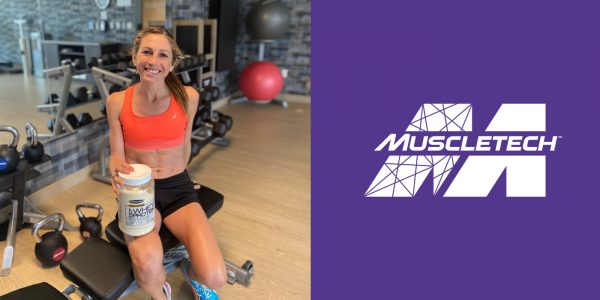Partials, isometrics and high reps combine for one of the most blistering chest pumps you’ll ever create!
You may have taken up lifting to get bigger and stronger, and as a beginner it’s nice to experience a double dose of each. Seeing week-over-week improvements is incredibly motivating to keep you coming back and training harder.
But soon enough those strength and size gains begin to stall. You can keep doing more of the same – with, not surprisingly, diminishing results – or you can start to tailor your workout to more specific goals. If you’re looking to build serious strength, you’ll realize that your approach in the gym starts to differ from those who are looking to maximize muscle size.
Strength training and bodybuilding use the same tools in the gym, but they have very distinct approaches. Whether you’re looking to train like a powerlifter, a bodybuilder undergoing a strength phase, or you just want to focus on building your strength on individual lifts, it’s important to know the critical parameters that set a strength-focused approach apart.
If you’re a bodybuilder, there’s one big advantage of including strength phases: Once you switch back to a musclebuilding-focused routine, your baseline of strength will be higher than what it is now. Instead of being able to complete 8 reps with 225 lbs. on the bench press, for example, you can now do 10, or conversely complete 8 with 245 lbs. In that sense, strength leads to size.
Here are some key pointers on building strength.
1. Recognize strength training isn’t the same as training for muscle size.
Sure, they both use many of the same exercises and types of equipment, but that’s where each discipline starts to veer from the other. Exercise combinations and the variables involved – including choice of exercises, number of sets, load and rest taken between sets – differ for each. Learn and respect those differences to maximize your gains. Pursuing two distinct goals simultaneously ensures you’ll come up short with each.
2. Focus on a few key multi-joint moves.
The basic powerlifting moves are the bench press, squat and deadlift. Strengthen these and you strengthen just about every body part because each of those movements engages so many different muscle groups. You could also include a shoulder press and bent-over row with your strength-focused moves for a bit more variety.
What’s more, you always want to do these highly demanding multi-joint movements early in your workout when your strength levels are high. Because the exercises require multiple muscle groups to work in coordination, you can handle serious loads. That better triggers your natural release of testosterone and growth hormone, both of which help you maintain and build strength and mass.
If you’ve done traditional bodybuilding-style training in the past, you probably think of working each body part individually. For now, you’re going to have to adjust that perspective. With a strength-focused workout, the goal is to increase the amount of weight you lift on the one main lift of the day (squat, bench press, deadlift, overhead press, row). Secondary exercises are included to strengthen any weak links among the muscles involved in the main lift rather than working the target musculature from various angles.
Finally, don’t try to use a strength approach on single-joint exercises, like cable crossovers or leg extensions, which put a huge amount of stress on a single joint. With relatively heavy loads, you want to spread the stress across multiple joints, a safer and smarter approach. So when training arms, for example, opt for weighted chin-ups (a multi-joint movement) on biceps day, or close-grip benches or weighted dips for triceps.
3. Increase the weight and reduce the number of reps.
Exercise scientists have weighed in on the load/reps relationship, but all you basically need to do is watch how a powerlifter trains. To build strength, you train with heavier weights for fewer reps. That means on your first (main) exercise, after warm-ups, choose a weight you can do for 1 to 6 reps.
Such a low rep target corresponds to about 85% to 95% of your 1-rep max (1RM). Compare that to a bodybuilder training to optimize muscle size: his intensity is typically 70% to 85% of his 1RM, equivalent to a rep range of 6 to 12.
The total number of reps (counting all sets) you do for the main exercise, not counting warm-ups, should fall within the 10 to 20 range. Your total sets, therefore, could be arranged like this:
- 2–3 sets of 6
- 3–4 sets of 5
Once you get to a weight that’s above 90% of your 1RM, which is a weight you can do for no more than 4 reps, drop the total reps for the exercise to 10 in such a manner:
- 2 sets of 4
- 3 sets of 3
- 4 sets of 2
Using your 1RM weight – the max load you can lift on a given exercise – isn’t the best way to build strength but is rather a measure of strength. Use those other combinations in a strength phase. When it comes to testing your limits, that’s when you’ll do 1RMs.
4. Add assistance exercises that help strengthen the main lift.
As previously noted, assistance or secondary exercises in a strength-focused workout are ideally chosen to target weak points – to build them up, so your main lift improves. However, using the same very heavy approach can overwhelm your nervous system. When following a high-intensity approach (the load relative to your 1RM) in a strength workout, you can’t also use high volume. With those assistance exercises, you’ll do fewer exercises, fewer sets and fewer total reps than you might when training for size.
Weak areas might be at the bottom of your range of motion, part way up or even at the top in the near-lockout position. Strength coaches have developed techniques that help you attack a sticking point utilizing such methods as chains or bands, partial reps, pauses at the bottom of the lift and isometrics – all of which can be done in a power rack for safety. The mechanics of doing each properly is beyond the scope of this article but are proven winners to increase strength!
For assistance exercises, pick two to four movements. Limit yourself to 15 to 25 total reps for each exercise (all sets counted), using loads that are 70% to 80% of your 1RM, which corresponds to a weight you can do for 8 to 10 reps. Sets and reps sequencing may, therefore, look like this:
- 2 sets of 8, 9 or 10 reps
- 3 sets of 8 reps
By Bill Geiger, MA








